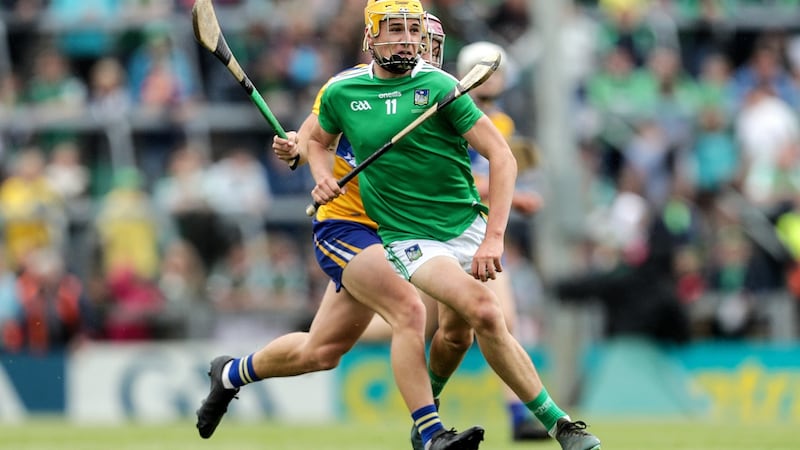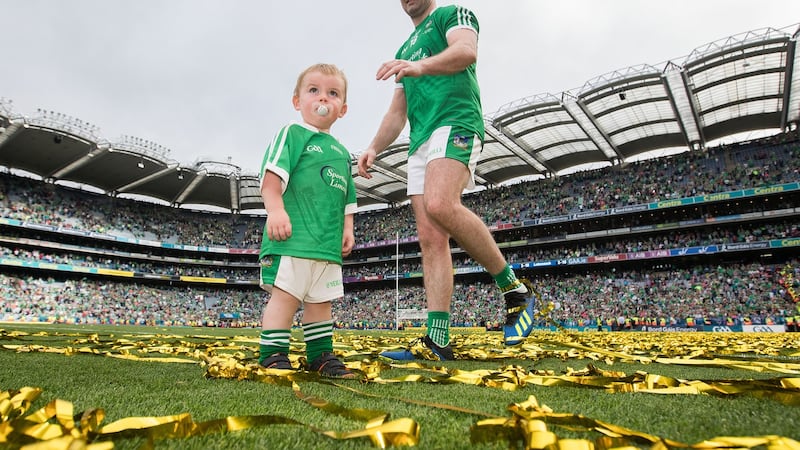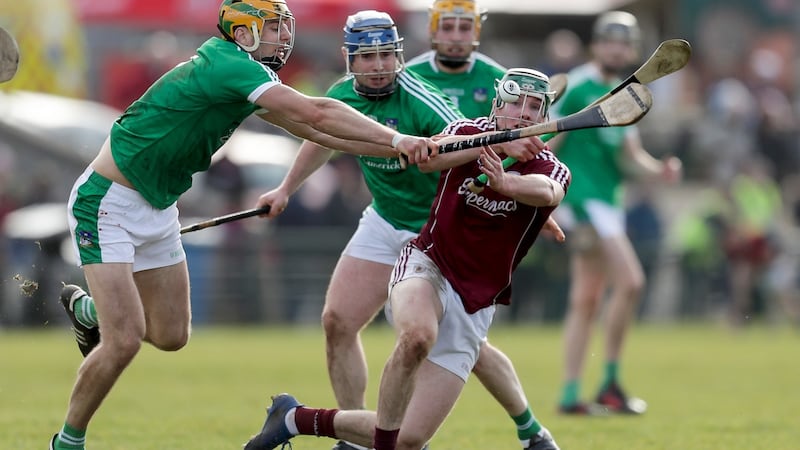The new GAA season comes swooping into our living rooms on Saturday night and first on show are the All-Ireland hurling champions, Limerick.
The automatic description of this time in the county’s hurling tradition would be ‘heady’ except that the opposite is true. A distinct level-headedness and evenness of emotion has characterised their stunning ascension to the summit. During last winter’s ghost season, they were perfect: 13 games and 13 wins. The league. Munster. The All-Ireland. Everything.
They looked unassailable on that silent All-Ireland final night against Waterford. Limerick won the first ever MacCarthy Cup in 1921 (presented two years later) and are holders now a century later. It’s a neat bracket and a reminder that for all its sporting diversity, Limerick is a hurling establishment. All evidence suggests that this period of prosperity is no howl in the dark. Two All-Ireland titles in three seasons and Limerick are favourites to win it all again this year.
"I fully expect them just to continue to follow their system and game plan and the results will take care of themselves," says Tom Condon, the veteran defender just retired.
“They have added to the panel. You need to freshen it up, too. Young Cathal O’Neill is exceptional, not to put pressure on him, and he is a big lad too. I am looking forward to seeing him play this year.”
Condon belongs to the generation whose career coincided with the turbulence and reconstruction of Limerick’s approach to senior intercounty hurling. A feted minor and under-21 player, he was drafted into the senior panel in 2009, which ended in a traumatising All-Ireland semi-final defeat to Tipperary [6-19 to 2-7] – against whom they will start their 2021 campaign this evening. Ultimately, Condon played with the county for as long as he felt he could but keenly remembers the difficulty behind the decision to quit the panel as a newcomer a decade ago.
“It was for the right reasons we felt – that things needed to change and our whole approach was, we felt, outdated, and we needed to compete. And what came from that, after 2010, was that Limerick overhauled their academy and invested in youth and in a plan.
"That is where most of these current players come from. There was a glimpse of a resurgence in 2013 [when Limerick won Munster under John Allen]. But when John [Kiely] came in, it didn't get off to a great start, either. In 2017, there were plenty baying for blood. But you could see what John was trying to implement with Paul Kinnerk. It took the bones of a year and a half to bed in. But once it clicked, we haven't looked back."
Evolution
Condon identifies the spring league match in Salthill in 2018, when Limerick reversed a 10-point half-time deficit against All-Ireland champions Galway, as the signature day in their evolution. They could point to the fact that they had proven themselves against the prize team.
It also meant they secured promotion to Division 1A for the first time in a decade. Kiely was memorably thrilled that day. The hurling fraternity agreed it was good to see Limerick get a lift but few had them pegged just then as the next champions. Even Condon was surprised by the explosive lift-off it gave them.
“With the talent coming through you knew it would build. I did say after the 2017 game that I reckoned Limerick would win All-Irelands. But I didn’t expect it to be the following year.”
Mark Foley, the stellar Limerick defender from '95 to '09 is a keen student and teacher of history. In March, he hosted a talk commemorating the mayoral murders in Limerick in 1921. Although not the primary topic, the GAA – and hurling – ran as a vivid thread through the panel conversation. Among the participants was Gearóid Ó Tuathaigh, the renowned historian and emeritus professor at NUI Galway. He grew up in Limerick city and can clearly recall the entrance of his primary school because of one detail. "When you would go in, all the hurleys would be stacked as if it was an umbrella rack," he says now.

"The Christian Brothers had three primary schools in the middle decades and they were all serious nurseries of hurling– at a time when the cohort going to secondary school was small. I am from the north of the city which would have been Treaty Sarsfields – whose modern incarnation in a much more rarefied middle class setting is Na Piarsaigh."
Treaty Sarsfields was a major player in Limerick GAA until suburbanisation began to reshape the hurling strongholds, which moved to the fringes of the city and beyond.
“It was just wound down,” he says of the Treaty club.
“Its core community was hollowed out. It was one of the areas where the GAA was late in terms of getting themselves embedded in the big housing estates Moyross and Ballynanty. They didn’t do that.”
Ó Tuathaigh’s Limerick “was and is a fanatical sporting city across all codes.” Hurling was a passion but no more so than rugby and the traditions of rowing and soccer also ran deep.
“There was a certain promiscuous following and enthusiasm for different codes,” he laughs.
“But – and this was the key – it was shot through with class elements. Rowing and rugby clubs overlapped with white collar bourgeois Limerick and the proletariat of soccer. However, hurling had a strong cross-class support base in the city that was akin to Cork.”
Those diverse interests in sport of all kinds may offer one reason as to why Limerick has never emulated the serial or dynastic All-Ireland successes of their historically dominant Munster rivals, Tipperary and Cork.
A simple scan of Limerick’s honour role evokes long periods of frustration and disappointment: seven All-Ireland titles, prior to 2018, rung out of 19 Munster championships. (Limerick now have nine All-Ireland wins and 21 Munster titles.) Even within the provincial theatre of Munster, entire generations of hurlers came and went with nothing to show: Limerick went from 1940-1955 with no Munster title, from 56-73 with none and from 1996 to 2013 with none.
Fervent support
“The passion of the community and the fervent support, even when expectations weren’t high, was always there,” Ó Tuathaigh recalls.
“When the ’55 team came along and won there was a huge support – and for a time they were competitive up to Munster final level. I left Limerick in 1962. But the years when they weren’t winning, there would still be huge Limerick crowds following the team. So I can’t explain why they didn’t explain a serial crop of winners. The same would be true oddly enough at Harty Cup level. The Limerick names are sprinkled compared to, say, Flannans or the Cork schools.”
Even the strongest GAA counties go through tough spells. Tipp endured what was, by their standards, a nightmare through the 1970s and mid 1980s. Cork are entering their 16th year without an All-Ireland. But until recently, Limerick were always guesswork, with talented squads rarely hitting on the consistency of performance required to convincingly challenge.
“The Limerick style when I started . . . there was no real . . . it was just hitting the ball and let the man win his own ball,” says Condon.

“Paul Kinnerk has developed a pattern where you were constantly thinking of a shorter pass to a man in a position to deliver a better ball in and turn the percentages in our favour.
"And a big thing, too, was Caroline Currid and what she did for us psychologically. Her reputation speaks for itself. Everywhere she has gone, success has followed. Limerick always had that doubt – and it came true in 2017 when we couldn't push on against Kilkenny. But after that Galway game the shackles came off. And Caroline was phenomenal. She always said you never play to your emotion. That is what we always used to do in Limerick. And when you do, your performances are very up and down. You don't have the consistency. If you stick to your system of play at training it will see you through."
It was Condon’s famous goalmouth catch of Joe Canning’s long, dangerously falling free during the gripping closing seconds of the 2018 All-Ireland that allowed Limerick people to finally believe the impossible was happening. There would be no late heartbreak or cruel luck. And when the smoke cleared, the full depth of Limerick’s strength began to dawn on other contenders.
The concentrated work of the academy had yielded startling results. Under Kiely, Limerick have developed into a physically huge, athletic team excellent at precision-possession and long-range scoring. The frightening thing, for other teams, is that they have yet to peak.
Green and White, the Limerick publication, celebrates its 25th anniversary this year, making it the third longest GAA magazine in the country. It’s been publishing through thick and thin. In its recent issue, it ran a piece on the embroidery of the 20th point Limerick scored in that final, leaving the team eight points clear of Waterford and effectively out of sight. What a luxury: Treaty fans could afford to sit back and enjoy the win even before it was made official.
It was, of course, the strangest occasion in hurling history. “Eerie,” confirms Condon, whose final season was badly interrupted by a broken finger and, later, an Achilles injury.

“No flags, no supporters. We met two stewards at the gate. But still. It meant so much to us. For long enough we would have given anything just to have one. And once the game started Limerick just switched on.”
They were imperious at times. Like all Limerick supporters, Gearóid Ó Tuathaigh watched on at home. He took particular pleasure in the performance of Gearóid Hegarty, later awarded hurler of the year. “He is a St Patrick’s player,” he points out. “Another club that had a lot of down times.”
The lockdown meant no homecoming, no extended celebrations and no distractions. The champions are rested after the long break and primed for the next assignment. No Limerick team has retained the Liam MacCarthy Cup. That quirk in history won’t be lost on the current crew when they trot out in front of the Mackey Stand on Saturday evening.










